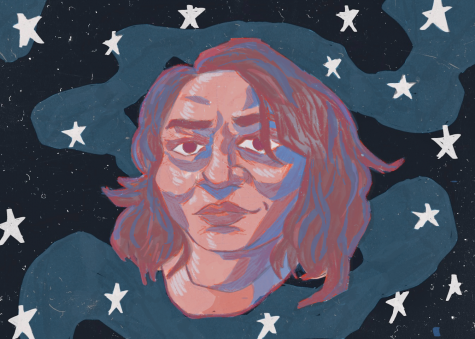‘Her name was starting to fade from public memory’: Michelle Duster shares her fight to honor Ida B. Wells
February 4, 2021

Chicago does not have many monuments for women, let alone women of color. But Michelle Duster and her family are in the process of changing that.
Their goal, conceived in 2008, is to erect a statue of Duster’s great-grandmother, Ida B. Wells, by 2022 at 37th Street and Langley Avenue.
“This location was once a housing unit named after Wells. Now, it is a community made up of mixed incomes. But without public projects like this one to remind people of what once was, there is a chance of erasure,” Duster said.
“My family felt that [Wells] needed to be remembered as a woman because she was not a building,” Duster said. “But with the buildings gone, her name was starting to fade from public memory. I realized that only 3% of monuments in this country honor women, and less than 1% honor Black women, and there are absolutely zero in Chicago still to this day.”
Wells was an educator, investigative journalist, newspaper editor, co-owner of two newspapers, civil rights activist and community organizer.
Duster, an adjunct instructor in the Business and Entrepreneurship Department and author of “Ida B. the Queen: The Extraordinary Life and Legacy of Ida B. Wells,” spoke at the college’s Collective Impact webinar on Tuesday, Feb. 2.
In the webinar, Duster shared the process of what it took to create a commemorative statue in honor of her great-grandmother, the process of changing a street name and the legacy Wells has left behind.
“It has been a marathon,” Duster said during the virtual chat. “It ebbs and flows. It is not like we were working on this every day, five days a week. … There were setbacks.”
The Collective Impact series was created in 2018 to highlight exhibitions and performances that seek to explore community engagement and social justice in art making.
The series was made to connect Columbia students, faculty, staff and members of the Chicago community to nationally renowned artists to discuss the challenges and logistics of collaboration and ways to create and sustain a collective impact through arts and media.
Throughout the talk, Duster created a timeline of Wells’ life and her accomplishments while referencing her impacts on journalism and social justice. Duster told the story of when three friends of Wells’ were unjustly lynched by a mob in Memphis, Tennessee, in March 1892.
“My great-grandmother made it very clear that it opened her eyes to what lynching really was, which was domestic terrorism,” Duster said. “It was violence that was used to oppress and [put] the African American community in a subordinate position. And she used her voice as a journalist to urge people in Memphis to boycott white-owned businesses.”
Before she was a journalist, Wells was a teacher and wrote articles about the disparities between Black schools and white schools, such as class sizes and salaries. As a result of writing about this, Wells was fired from her job.
“What a woman of resilience,” Mary Filice, chair and associate professor in the Business and Entrepreneurship Department and moderator of the webinar, said. “Maybe the ultimate role model is from within.”
For years, Duster, her relatives and community members have been working to honor the legacy of Wells. In February 2019, a ceremony was held to change the name of Congress Parkway to Ida B. Wells Drive.
“It started with the League of Women Voters who wanted to have a street named downtown after a woman because up until now there was not one street in downtown Chicago named after a woman,” Duster said.
The effort to erect a monument to Wells has also been a long and arduous process, Duster explained.
Steps to get the city of Chicago to support the monument included: sending a letter to former Mayor Richard Daley in 2008, reaching out to local community leaders, city officials and departments, selecting a location and forming a committee for the campaign. Duster also chose artist Richard Hunt to sculpt the monument.
Hunt was chosen because his art is abstract and interpretive and that reflects the desired look of the monument, Duster said.
“We wanted to have a piece of work created because my great grandmother’s legacy, the work that she did, was so multi-dimensional that it is hard to put into one space or one image,” Duster said. “We wanted to have more than one image of her … [that wasn’t] so literal because we want people to be able to take from within themselves what piece of her they relate to.”







